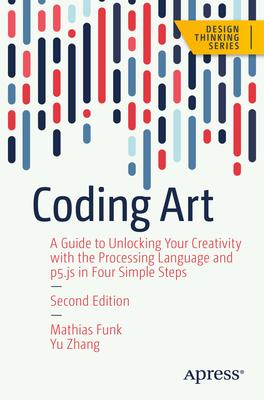Rather than following a computer science curriculum, this book is aimed at creatives who are working in the intersection of design, art, and education. Following a real-world use case of computation art, you'll see how it relates back to the four key pillars, and addresses potential pitfalls and challenges in the creative process. All code examples are presented in a fully integrated Processing example library, making it easy for readers to get started.
This unique and finely balanced approach between skill acquisition and development makes Coding Art, Second Edition the ideal reference book for both creative programming and the creative process for professors and students alike.
What You'll Learn
- Review ideas and approaches from creative programming to different professional domains
- Work with computational tools like the Processing language
- Understand the skills needed to move from static elements to animation to interaction
- Use interactivity as input to bring creative concepts closer to refinement and depth
- Simplify and extend the design of aesthetics, rhythms, and smoothness with data structures
- Leverage the diversity of art code on other platforms like the web or mobile applications
- Understand the end-to-end process of computation art through real world use cases
- Study best practices, common pitfalls, and challenges of the creative process
Who This Book Is For
Those looking to see what computation and data can do for their creative expression; learners who want to integrate computation and data into their practices in different perspectives; creative technologists, educators, digital artists and those who already know how to program, seeking creativity and inspiration in the context of computation and data.
